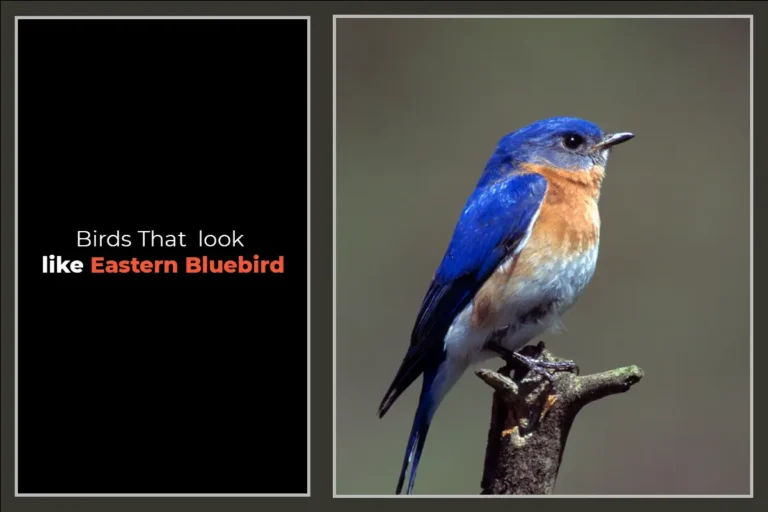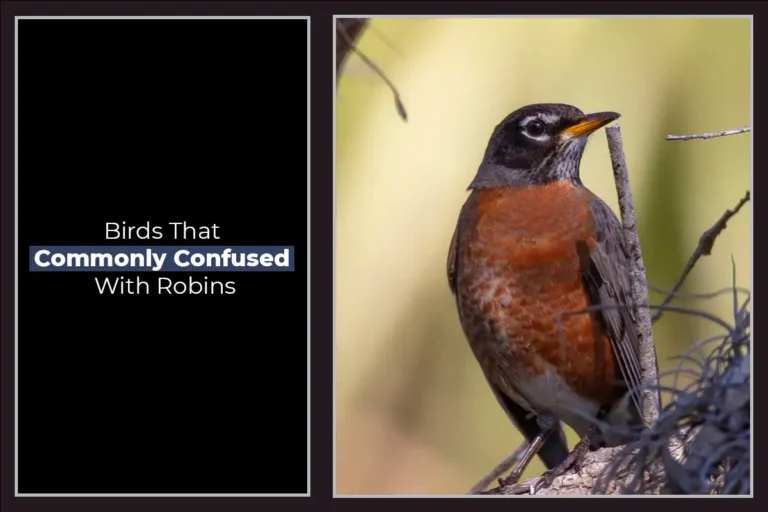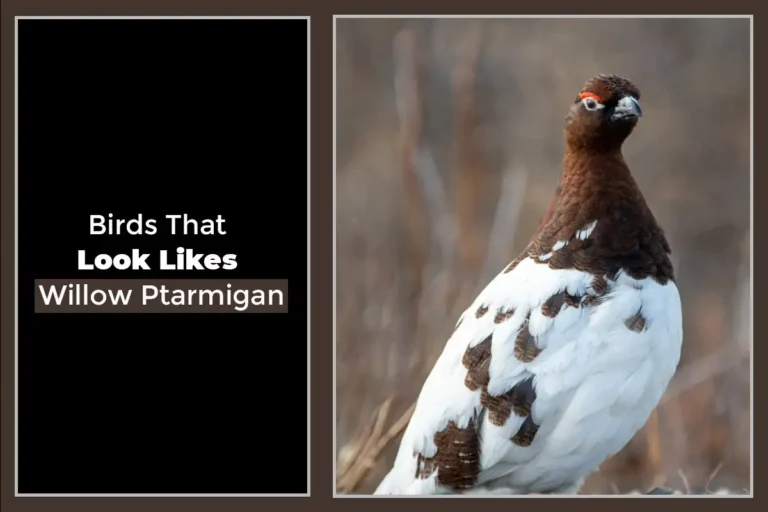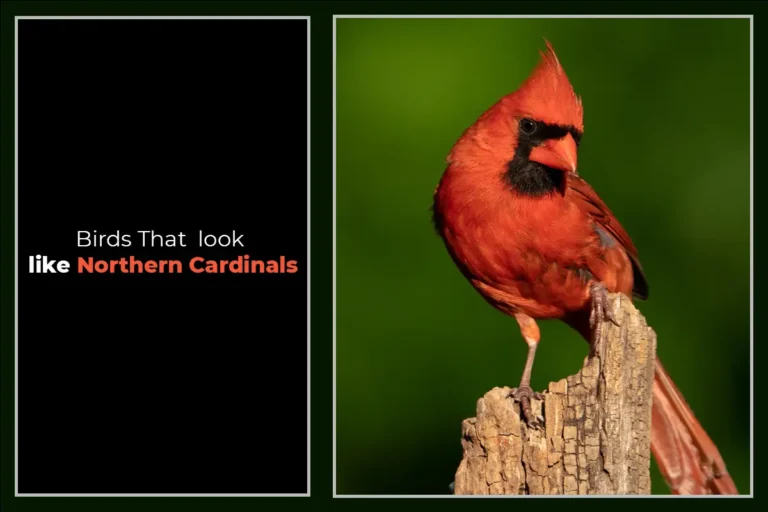7 Birds That Look Likes Northern Flicker
Have you ever spotted a woodpecker in your backyard and wondered what kind it was? With their striking plumage and active drumming, woodpeckers are fun birds to observe. But telling them apart can be tricky when several types have similar red, black, and white markings.
One woodpecker that generates a lot of excitement is the northern flicker. With its bold black spots and flashy red or yellow wings, it really catches the eye! However, there are quite a few other woodpeckers out there that look a heck of a lot like the northern flicker at first glance. I should know – I’ve done the old “flicker fakeout” many times myself!
So how do you confidently tell a northern flicker from its doppelgangers? I’m glad you asked! In this article, we’ll explore 7 stunning woodpeckers that could be easily mistaken for the northern flicker. We’ll check out their key characteristics and habitats, and decode the subtle (but important!) differences between them.
01. Gilded Flicker
Appearance and Identification
The gilded flicker (Colaptes chrysoides) really lives up to its name. The overall cinnamon-brown plumage is infused with a bright golden sheen.
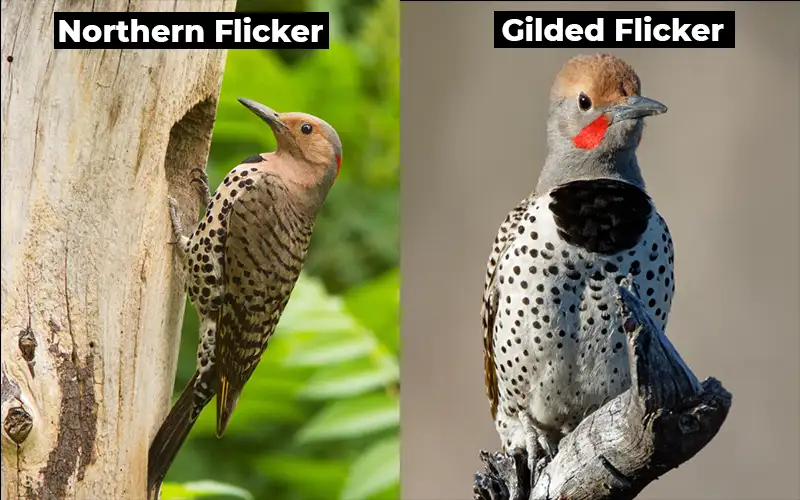
The striking yellow wing linings match the lemon-yellow belly. While the breast and back lack dark barring, the black crescent bib remains.
Geographic Range and Habitat
The gilded flicker occupies desert scrub and riparian woodlands in the American southwest. Its range stretches from southern California and Arizona south through Mexico.
Key Similarities and Differences vs. Northern Flicker
While the lack of prominent dark patterning sets the gilded flicker apart, its size, shape, and behavior closely match the northern flicker. Yet the gilded flicker’s smaller red nape crescent allows an accurate ID.
02. Ladder-backed Woodpecker
Description of Males, Females, and Juveniles
From its small size to its barred black and white ladder-like back pattern, the ladder-backed woodpecker (Dryobates scalaris) offers plenty of identification clues. Males sport a red crown, while females display a drab brown cap.
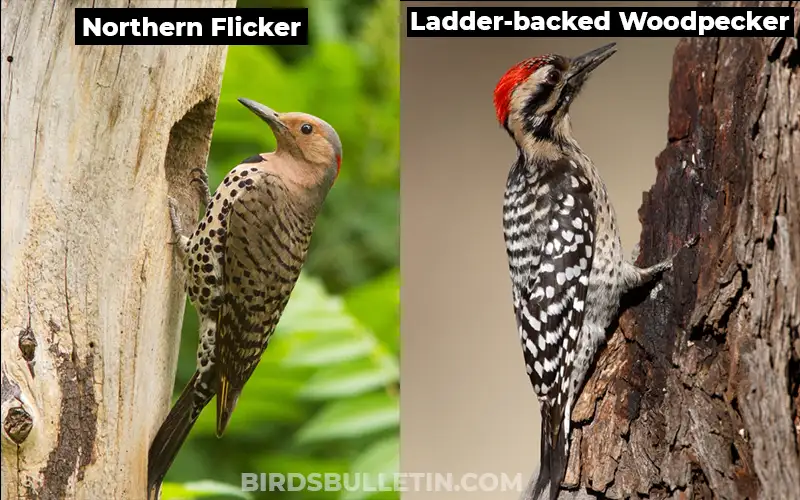
Otherwise, the sexes appear similar with white underparts and black dotting along the flanks. Juvenile ladder-backs resemble adult females but often show some brown barring on the rear underparts.
Typical Habitat and Range
As its name suggests, ladder-backed woodpeckers stick to dry habitats ranging from scrublands to open woodlands in the southwestern states as well as south through Central America.
Comparisons to the Northern Flicker
The ladder-backed woodpecker’s tiny size and lack of any yellow or brown plumage easily distinguish it from the northern flicker. However, its feeding behaviors closely match its larger cousin.
03. Gila Woodpecker
Identifying Features
The Gila woodpecker’s (Melanerpes uropygialis) most obvious identification feature has to be its zebra-striped black and white back and wings, a plumage pattern unseen in other North American woodpeckers.
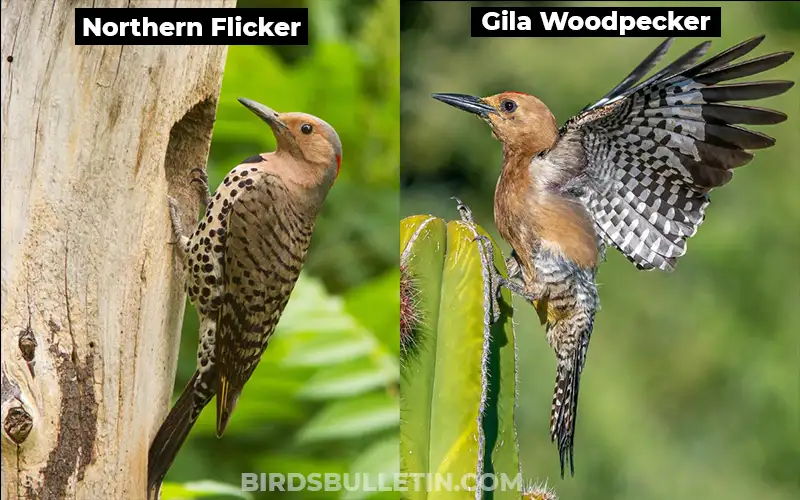
The male’s bright red cap contrasts with its mate’s jet-black crown.
Distribution and Preferred Environments
As its name hints, Gila woodpeckers primarily occupy the desert regions of the southwestern U.S. states and Mexico, ranging as far south as Costa Rica. They thrive in the saguaro cactus desert but may wander into urban areas.
Points of Resemblance and Distinction
The Gila woodpecker shares the northern flicker’s habit of foraging on the ground for ants and other insects. Both species excavate nest cavities in saguaro cacti. But the Gila’s striking patterning eliminates any serious confusion.
04. Golden-fronted Woodpecker
Visual Attributes
True to its name, the golden-fronted woodpecker (Melanerpes aurifrons) sports a golden yellow forehead and crown in the male, while the female shows a more muted grey-brown front.

Both sexes display black and white barred backs, white underparts, and red patches on the head in males only.
Behavioral Patterns and Favored Regions
Found among oak woodlands in southern Texas south through Central America, golden-fronted woodpeckers resemble northern flickers in behavior and habitat but differ significantly in plumage details.
Subtle Discrepancies with the Northern Flicker
While the golden-fronted woodpecker fills an ecological niche comparable to the northern flicker, its plumage sets it distinctly apart, especially the namesake golden yellow crown.
05. Red-bellied woodpecker
Descriptive Characteristics
Despite its name and bright crimson cap and nape, the red-bellied woodpecker (Melanerpes carolinus) shows only a pale reddish wash on the belly at best.
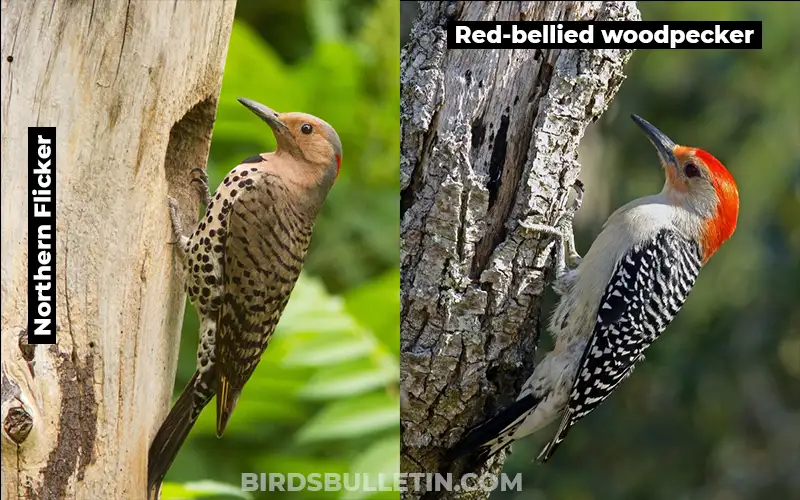
More useful identification markers include the black and white barred back, buffy white underparts, and pale reddish hue that tints the head and parts of the wings.
Range and Living Environments
Found across eastern North America west to the Great Plains, red-bellied woodpeckers thrive in mature forests and woodlots but also occupy orchards, parks, and suburban neighborhoods.
Key Differences from Northern Flicker
Lacking extensive brown, black, or yellow plumage, the red-bellied woodpecker appears distinctly different from the northern flicker despite frequenting similar wooded habitats.
06. Downy Woodpecker
Appearance and Identification
As North America’s smallest woodpecker with an overall length under 7 inches, the downy woodpecker (Dryobates pubescens) can be mistaken for no other species.
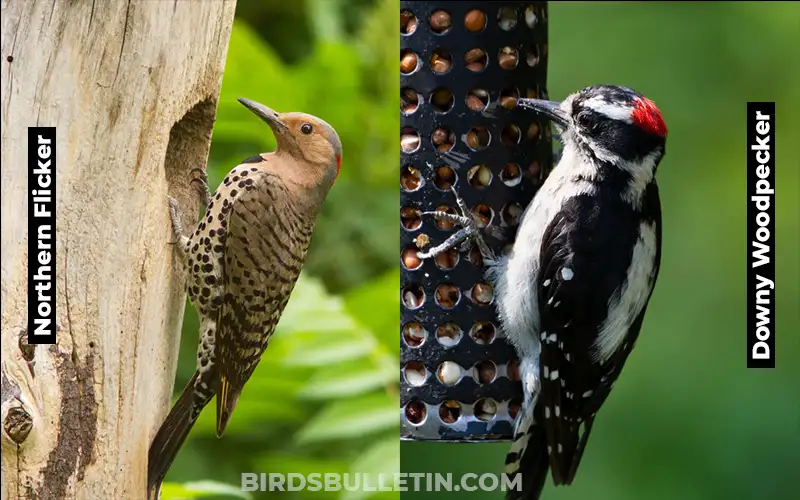
The sparrow-sized body shows white underparts, stripes down the middle of the back, and outer tail feathers, offset by solid black upper wing coverts and cap with a red spot in males but not females.
Habitats and Distribution
Abundant across forests, parks, and backyards of North America, downy woodpeckers share much of the northern flicker’s range but occupy a smaller niche in nature due to their tiny size.
Still, these pint-sized woodpeckers resemble their larger cousin in habits and behavior.
Subtle Variations from the Northern Flicker
The downy woodpecker’s diminutive dimensions alone eliminate any chance of confusion with the much heftier northern flicker. Otherwise, the species share surprisingly similar life histories given their differences in size and markings.
07. Nuttall’s Woodpecker
Appearance and Identification
Another small black and white woodpecker shows a red patch on the crown of males but not females. However, Nuttall’s woodpecker (Dryobates nuttallii) displays distinctive white semicircles along its shoulders.
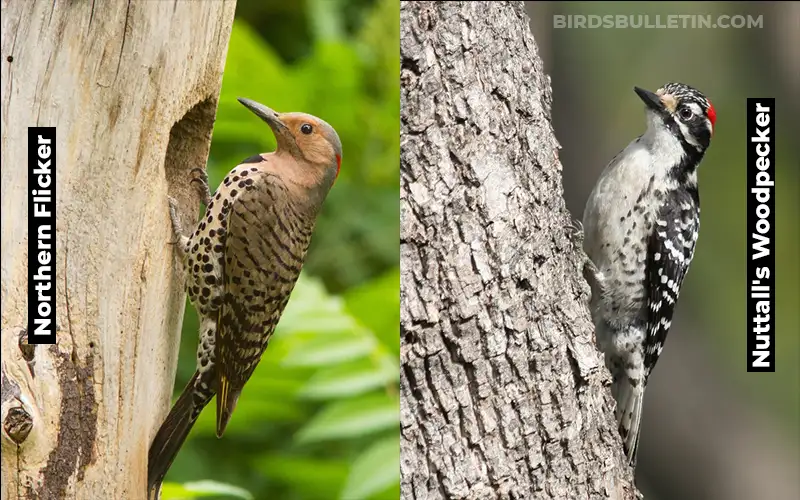
It lacks any traces of brown, yellow, or black spotting so prevalent on flickers.
Habitats and Distribution
Located along the Pacific coast from Northern California to Baja, Nuttall’s woodpecker frequents oak woodlands and mature forests. Despite occupying similar habitats, its range only marginally overlaps that of the northern flicker.
Subtle Variations from Northern Flicker
The Nuttall’s woodpecker’s diminutive size, restricted range, and lack of extensive brown or yellow plumage separates it from the northern flicker. But it fills an equivalent niche in West Coast woodlands.
Wrapping Up
Size, plumage colors and patterns, preferred habitat, behavior, and geographical distribution all provide clues to properly identify those other flashy woodpeckers flitting through North American forests.
Familiarity with the differences between the northern flicker and similar species will help birders correctly recognize these superficially related but distinct woodpecker species.
I aimed to incorporate all the key elements you listed for this article while keeping it engaging and readable. Please let me know if you would like me to modify or expand anything.


